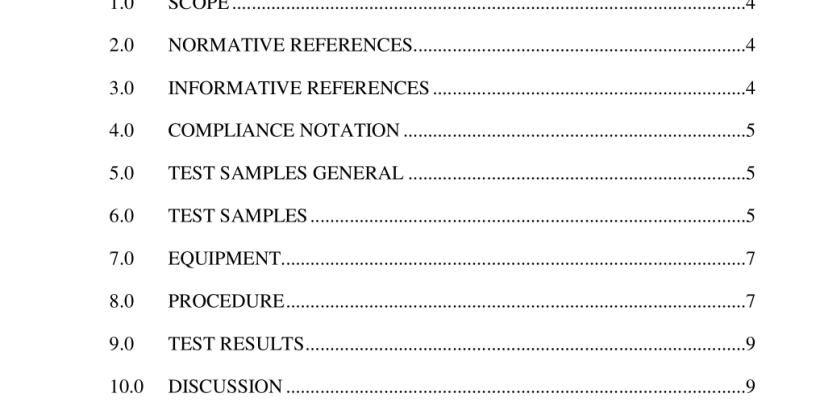ANSI SCTE 103-2018 pdf download.Test Method for DC Contact Resistance, Drop cable to “F” connectors and F 81 Barrels
6.2 CONNECTOR TO CENTER CONDUCTOR CONTACT
Cable for the test sample should be two samples 12” ± 0.125” long each. The ”F Male connectors should be installed onto one end of each cable using the manufacturer’s recommended instruction and tools. Install the connectorized samples on the inline “F” female splice and tighten to manufacturers recommendations. 2” ± 0.125” of the jacket, outer shield(s) and dielectric shall be removed to cleanly expose the center conductor on each non-connectorized end. The test sample may be pre-conditioned prior to testing, i.e., temperature cycled, humidity cycled, etc.
6.3 SHIELD, CONNECTOR AND CENTER CONDUCTOR CONTACT (LOOP)
Cable for the test sample should be cut to 12” ± 0.125” long. A “F” Male connector should be installed onto one end of the cable using manufacturer recommended instruction and tools. The “F” female splice should be installed into the F-Connector and tightened to manufacturer recommendations. A jumper should be constructed to connect between the outer surface of the F Female splice and the center contact of the splice. It may be useful to use a length of 18 AWG, solid copper wire with an appropriately sized lug soldered onto one end, attached to the threaded portion of the splice and the other end inserted into the center contact..
8.2 CONNECTOR TO CENTER CONDUCTOR CONTACT
The intent of the setup is to pass steps of 2, 4 and 6 amperes through the cable center conductor, the connector and the cable-to-connector interface and measure the voltage drop across the interface. The alligator clips from the DC Power supply shall be placed on each of the two- unconnectorized cable center conductor ends of the test sample. Similarly, the alligator clips from the Voltmeter shall be placed on each of the two-unconnectorized cable center conductor ends of the test sample. Currents of 2, 4 and 6 amperes shall be delivered for a period of one minute each or until the current stabilizes, whichever is shorter. Voltage drop measurements shall be taken and the resulting resistance calculated and recorded.
8.3 SHIELD, CONNECTOR AND CENTER CONDUCTOR CONTACT (LOOP)
Depending on the particular test equipment (voltmeter, ohmmeter and DC power supply.) The ammeter shall be place in series in the circuit and the voltmeter shall be placed in parallel. The intent of the setup is to pass steps of 2, 4 and 6 amperes through the cable shield, the cable-to-connector interface, the connector and the cable center conductor and measure the voltage drop across the interface of interest. One alligator clip from the DC Power supply shall be placed on the exposed cable center conductor and the other alligator clip shall be placed on the cable outer conductor. It may be desirable to twist the braid wires together in order to provide better contact. One alligator clip from the Voltmeter shall be placed on the exposed cable center conductor and the other alligator clip shall be placed on the cable outer conductor. Currents of 2, 4 and 6 amperes shall be delivered for a period of one minute each or until the current stabilizes, whichever is shorter. Voltage drop measurements shall be taken and the resulting resistance calculated and recorded.
10.0 DISCUSSION
The definition of maximum contact resistance for every combination of cable size, center conductor and shield configuration is beyond the scope of this Test Procedure. The test engineer should keep in mind that it is most desirable to have contact resistances as close to zero as possible. A control jumper should be made using the cable that is to be tested to verify circuit stability and accuracy.ANSI SCTE 103-2018 pdf download
